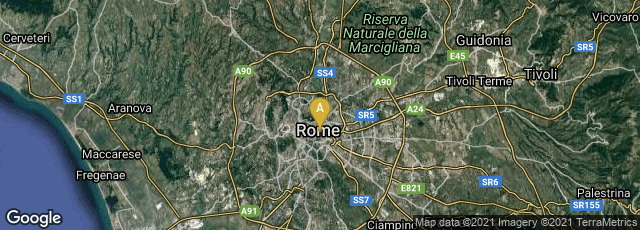

On Military Arrangements of the Greeks (Περὶ Στρατηγικῶν Τάξεων Ἑλληνικῶν), written by the Greek military writer Aelianus Tacticus (Αἰλιανός Τακτικός) who lived in Rome during the second century CE, was a handbook of Greek, i.e. Macedonian, drill and tactics as practiced by the Hellenistic successors of Alexander the Great. The treatise, which is most often referred to as Aelian's Tactics or Tactica, was of particular value for its explanation of the operation of the Macedonian phalanx, an infantry formation developed by Philip II of Macedon, and used by his son Alexander the Great to conquer much of the known world.
The earliest surviving manuscript of Aelian's Tactics is the Codex Laurentianus graecus 55.4 preserved in the Bibliotheca Medicea Laurenziana in Florence. This tenth century Byzantine codex is a collection of classical Greek, Hellenistic and Byzantine military treatises. In July 2014 a digital facsimile of the codex was available from the TECA Digitale of the Laurentian Library at this link. The manuscript contains non-figurative diagrams, using letters to represent soldiers in the infantry formations described by Aelian. These diagrams were characterized by Sydney Anglo, The Martial Arts of Renaissance Europe (2000) 61 as "the earliest examples of diagrams representing human activity."
Aelian's text first appeared in print in the Latin translation by the Greek humanist Theodorus Gaza (Θεόδωρος Γαζῆς, Theodoros Gazis) as De instruendis aciebus, issued from Rome by Eucharius Silber on February 15, 1487. The text was edited for publication by Italian humanist Johannes Sulpitius Verulanus (Fra Giovanni Sulpizio da Veroli). (ISTC no. ia00096495). In July 2014 a digital facsimile of that edition was available from the Bayerische Staatsbibliothek at this link. In the printed edition the diagrams were represented by letters of type arranged on the page to form the shapes of the infantry formations, perhaps somewhat simplified from the diagrams in the manuscript codices. Silber reissued Aelian's text in a collection entitled Scriptores rei militaris in 1494 (ISTC no. is00344000). In July 2014 a digital facsimile of that edition was available from the Herzog August Bibliothek Wolfenbüttel at this link. In that edition Aelianus's diagrams were also represented by letters of type. On July 10, 1495 and January 17, 1496 printer Franciscus [Plato] de Benedictis (Francesco de Benedetti) of Bologna issued another collection with a similar title, but edited by Italian humanist Filippo Beroaldo (Phillipus Beroaldus). (ISTC no. is00345000). In July 2014 a digital facsimile of that edition was available from ETH-Bibliothek Zurch at this link. This edition also used letters to represent the infantry formations.
Following several 16th century Latin editions, the first separate edition in Greek, often called the editio princeps, of Aelian's Tactics was edited by Italian humanist Francesco Robortello and issued in Venice by Andrea and Giacomo Spinelli in 1552. Its full title was Περὶ Στρατηγικῶν Τάξεων Ἑλληνικῶν, De militaribus ordinibus instituendis more graecorum liber Francisco Robortello Vtinensi nunc primum Graece multis que imaginibus & picturis ab eodem illustratis. This finely printed and illustrated edition may have been the first to use small woodcut figures of the various types of soldiers and cavalry in the diagrams of the formations. Robortello based his text on Codex Venetus 904, dating from circa 1330, in the Biblioteca Marciana, Venice. When I wrote this entry in July 2014 I was unable to locate a digital facsimile of either Venetus 904 or the 1552 Robortello edition.
The actual first edition in Greek, or editio princeps, of Aelian was edited and printed in 1532 in Paris by scholar printer Michel de Vasconsan in a volume of Greek texts typically catalogued as Ὀνομάτων Ἀττικῶν Ἐκλογαὶ.... Dictionum Atticarum Collectio [et alia opera : PHRYNICHOS, Manuel MOSCHOPOULOS, AELIANUS TACTICUS, ORBICIUS]. Probably because Vascosan favored unadorned editions, he included no diagrams in his printing of Aelian. In July 2014 a digital facsimile of this edition was available from the Bibliothèque numérique of the Bibliothèque nationale de France at this link.
Aelian's work was first translated into English, heavily annotated by Captain John Bingham, and published in London in 1616, as The Tactiks of Aelian; or Art of Embattailing an Army after ye Grecian manner Englished & illustrated with figures throughout: & notes upon ye Chapters of ye ordinary motions of ye Phalange by I. B. Th exercise military of ye English by ye order of that great generall Maurice of Nassau Prince of Organe &c Gouvernor & Generall of ye united provinces is added. As implied by the title, Bingham servered under Maurice of Nassau. The first edition has an elegant engraved title page and beautiful engraved versions of the formations on 50 inserted folding plates. Bingham's translation was revised by Ralph Mab and reissued in 1631.
"Philip II spent much of his youth as a hostage at Thebes, where he studied under the renowned general Epaminondas, whose reforms were the basis for the phalanx. Phalangites were professional soldiers, and were among the first troops ever to be drilled, thereby allowing them to execute complex maneuvers well beyond the reach of most other armies. They fought packed in a close rectangular formation, typically eight men deep, with a leader at the head of each column and a secondary leader in the middle, so that the back rows could move off to the sides if more frontage was needed.
"Each phalangite carried as his primary weapon a sarissa, a double-pointed pike over 6 m (18 ft) in length. Before a battle the sarissa were carried in two pieces and then slid together when they were being used. At close range such large weapons were of little use, but an intact phalanx could easily keep its enemies at a distance; the weapons of the first five rows of men all projected beyond the front of the formation, so that there were more spearpoints than available targets at any given time. The secondary weapon was a shortsword called a kopis, which had a heavy curved section at the end.
"Neither Philip nor Alexander actually used the phalanx as their arm of choice, but instead used it to hold the enemy in place while their heavy cavalry broke through their ranks. The Macedonian cavalry fought in wedge formation and was stationed on the far right; after these broke through the enemy lines they were followed by the hypaspists, elite infantrymen who served as the king's bodyguard, and then the phalanx proper. The left flank was generally covered by allied cavalry supplied by the Thessalians, which fought in rhomboid formation and served mainly in a defensive role.
"Other forces — skirmishers, range troops, reserves of allied hoplites, archers, and artillery — were also employed. The phalanx carried with it a fairly minimal baggage train, with only one servant for every few men. This gave it a marching speed that contemporary armies could not hope to match — on occasion forces surrendered to Alexander simply because they were not expecting him to show up for several more days. Phalangites were drilled to perform short forced marches if required" (Wikipedia article on Macedonian phalanx, accessed 07-06-2014).
Even though the Macedonian phalanx was eventually displaced by the Roman legion, it was widely revived during the Renaissance, and was most extensively applied during the late sixteenth and seventeenth centuries, during which time Aelianus's work underwent several editions, translations and adaptations.
A letter to Maurice of Nassau, Prince of Orange from his cousin William Louis, Count of Nassau-Dillenburg dated December 8, 1594 provides the earliest documentation of the influence of Aelian's Tactics on military activity in the late sixteenth century. In this letter William Louis discussed the use of ranks by soldiers of Imperial Rome as explained in Aelian's Tactica. Aelian discussed the use of the countermarch in the context of the Roman sword gladius and spear pilum, but William Louis realized that the same technique could work for men with firearms:
"I have discovered ex evolutionibus [a term that would eventually be translated as 'drill'] a method of getting the musketeers and others with guns not only to practice firing but to keep on doing so in a very effective battle order (that is to say, they do not fire at will or from behind a barrier. . . .). Just as soon as the first rank has fired, then by the drill [they have learned] they will march to the back. The second rank, either marching forward or standing still, will then fire just like the first. After that, the third and following ranks will do the same. When the last rank has fired, the first will have reloaded, as the following diagram shows: those little dots [stippelckens] show the route of the ranks as they leave after firing" (Parker, "Military Revolutions, Past and Present," in Yerxa (ed.) Recent Themes in Military History [2008] 13.)
In 2012 Christopher Matthew issued The Tactics of Aelian or On the Military Arrangements of the Greeks. A New Translation of the Manual that Influenced Warfare for Fifteen Centuries. This edition, with parallel Greek and English texts, an informative introduction, and new, easier to comprehend versions of the diagrams, is highly recommended.
Hale, Renaissance War Studies (1983) 266, 438.
Roberts, Keith, Pike and Shot Tactics 1590-1660, illustrated by Adam Hook (2010) is also highly recommended.